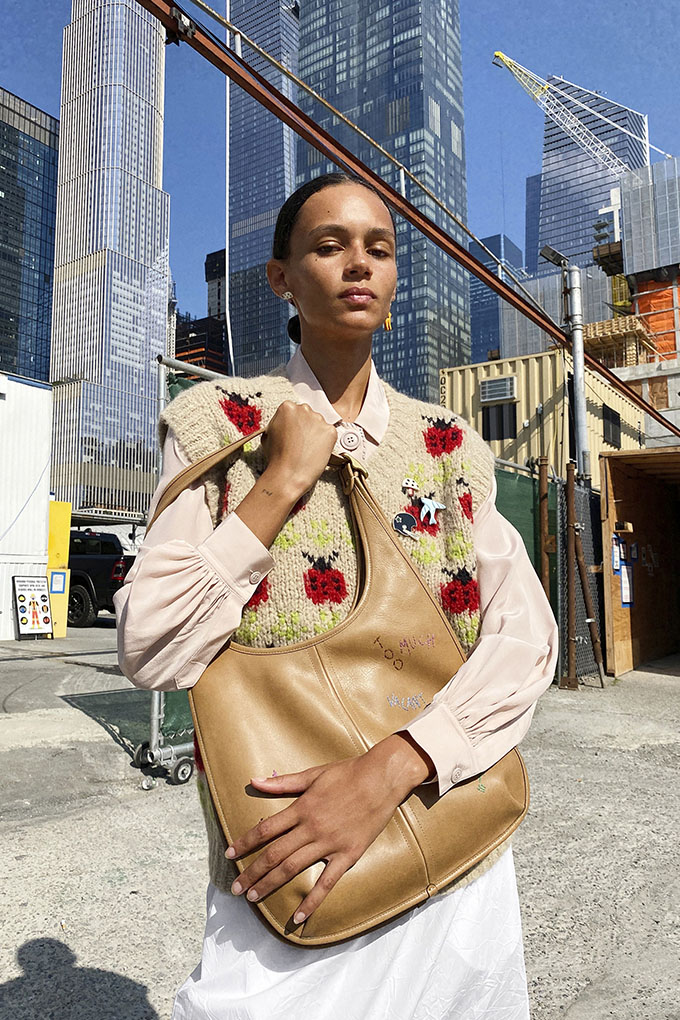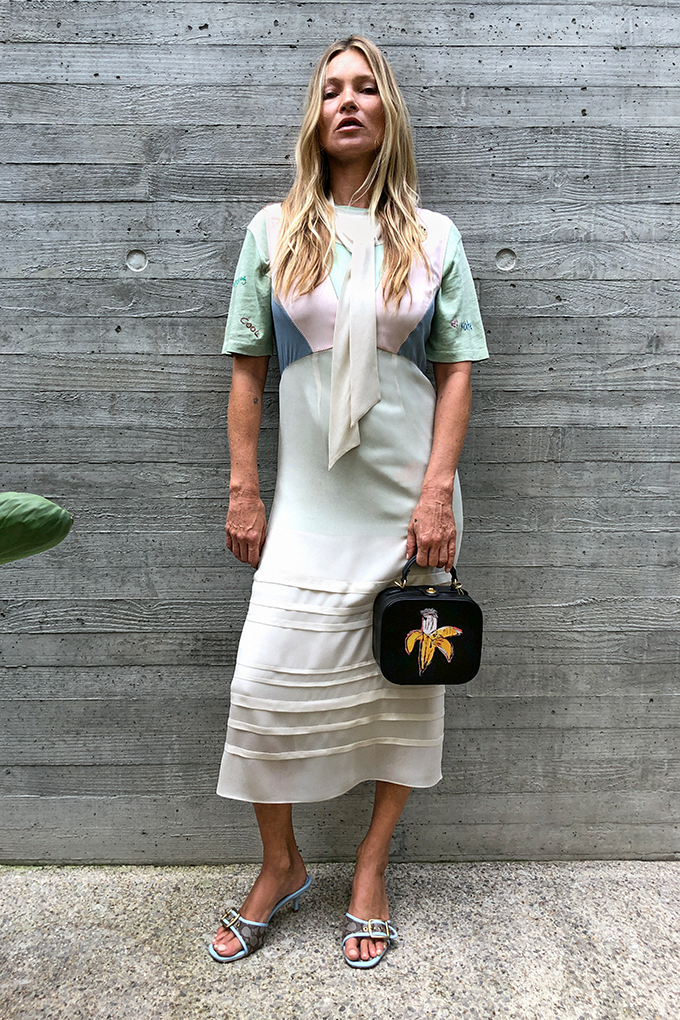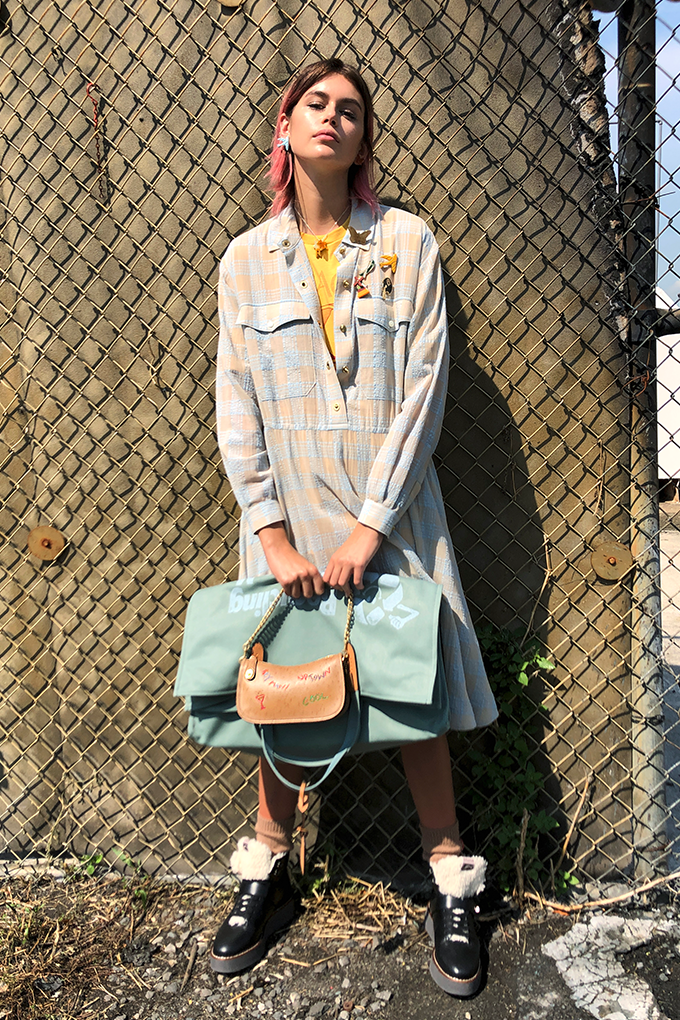Coach’s spring/summer 2021 collection was an oxymoron. And it’s the oxymoron fashion needs. Titled ‘Future Vintage’, creative director Stuart Vevers’ vision for the season effectively pivots the brand onto a more conscious-minded path. As brands continue to contemplate the necessity of the fashion show, Coach seems to have moved on—focusing on practices that tangibly shift the way their pieces impact the environment.
Teaming up with two New York-based reuse programmes, FabScrap and Materials For The Arts, Coach will be recycling its textile waste responsibly—such as, by giving them to non-profit arts organisations and schools. Also of note? The season’s campaign shot by Juergen Teller with an all-star cast comprising the likes of Kaia Gerber, Ju Xiaowen, Cole Sprouse and Binx Walton.
In an exclusive interview with Vogue Singapore, Vevers shares his experience working with Teller, his views on fashion’s sustainability buzz and his plans for Coach moving forward.

What was it like working with the Coach Family and Juergen Teller on this campaign?
Juergen helped introduce my evolved vision for the house—one centred around authenticity, character and joy. I knew he would be able to uniquely capture the individuality of our cast and the story I wanted to tell for Coach Forever. The Coach Family are people who inspire me. What I love about this cast, and working with Juergen, is that when this group comes together, it feels distinctly Coach. And I was thinking that if our presentation was a party, you’d have a really good time.
Can you tell us more about the accessories in Coach Forever? Do you have a favourite accessory?
It would be difficult to pick a favourite! But some of the bags I am most proud of this season are those we designed with responsible materials—bags crafted in Original Natural Leather, which is a vegetable-tanned and naturally dyed leather, and up-woven bags crafted of salvaged leather scraps from our factories, woven into something new. We also created a tote made of 100 percent recycled materials, from the fabric to the leather to the thread.

Some of the accessories feature quirky and interesting personalisation through embroidery. What was the inspiration behind this?
I wanted to celebrate the individuality of our cast and how each individual would wear the pieces in their own way, with their personal touches. The words were like entries in a diary or a sketchbook. We also embroidered the name of the cast on pieces. It was about making every piece feel specially created for each person.
Accessories are very much the lifeblood of heritage brands such as Coach. How do you strike a balance between creating newness each season with sustainable practices?
Coach bags are ‘Crafted to Last’ meaning that our bags aren’t just long-lasting, they can also get better with age. They are designed to be worn, loved and eventually passed along. You’ll see in my recent collections that I’ve taken a different approach to seasonality too. When you keep and wear items longer, you are reducing your impact on the environment, and those small steps can add up to big changes. We’ve always turned waste into new possibilities as our leather is 100 percent a waste product of other industries. But, in the last six months, we have had the opportunity to accelerate things that we were already exploring; learning through design, approaching things more responsibly, rethinking ‘waste’, moving away from linear thinking, to an approach that’s circular—that’s about ‘foreverness’.

You’ve previously mentioned that Bonnie Cashin has been a great inspiration for you when looking back at the Coach archives. What are some of your other key sources of inspiration?
For Coach Forever, the early inspiration was actually quite specific, grounded in New York’s Upper East Side. But as early 2020 evolved, many things we were working on just felt—if I’m honest—irrelevant, and small. We naturally started to pivot, to think differently. It was very instinctive, but at a certain point some things didn’t feel right, and we had to dig deeper. The times we are living in forced reflection about what matters most to me. Our responsibility to people and the planet, the lifecycle of fashion, our communities—and this whole moment had to become an opportunity to accelerate these things. I thought, “If not now, when?”
In the end, this collection is very Coach, and it’s very me. There are some pieces that are quintessentially Coach—from our archives, from more recently and from generations before. There are also archival pieces from Bonnie Cashin I’ve reissued—from her days beyond Coach. Coach Forever feels like a collection that reflects the moment we are in, from the way it was designed and made, to the way it was presented.

There have been many concerns surrounding the term ‘sustainable fashion’ being thrown around and used loosely for fashion brands. Can you share your thoughts on this? How will you ensure that Coach continues to champion sustainability through your production processes?
We’re committed to reducing the impact we have on the environment. And learning through design. A lot of this is already in our DNA—in our craftsmanship and with our care and repair services. Coach Forever pushes that further with vegetable-tanned, naturally dyed leathers, and recycled, upcycled, up-woven and vintage materials. There’s so much more we can and will do in the future as we continue to create and innovate especially around leather. We know we don’t have all the answers, but that shouldn’t make us afraid to try things. I like to think of this process as practical optimism: it’s proactive instead of reactive.

As Coach continues to take steps towards transparency and circularity, what is one thing that you’re still learning to better understand when it comes to sustainable fashion?
Our responsibility to the environment was something that felt important to explore with Coach Forever. The design team and I have prioritised learning more about this—learning by doing, and learning even more from that. We are not really using the word “sustainable” to describe what we are envisioning, but thinking in terms of responsibility—our responsibility to the environment; to nature; and to one another. The biggest breakthrough was letting go of being perfect, approaching our responsibility to the environment not with intimidation or shame but with honesty and openness. Instead, we are striving to experiment, prototype, test and learn. We are approaching everything with an exploratory mindset—which is really a design mindset. Coach Forever’s upcycled, recycled and pieces crafted in natural leather came from this mindset—and I’m excited to see where this will take us with future collections.





